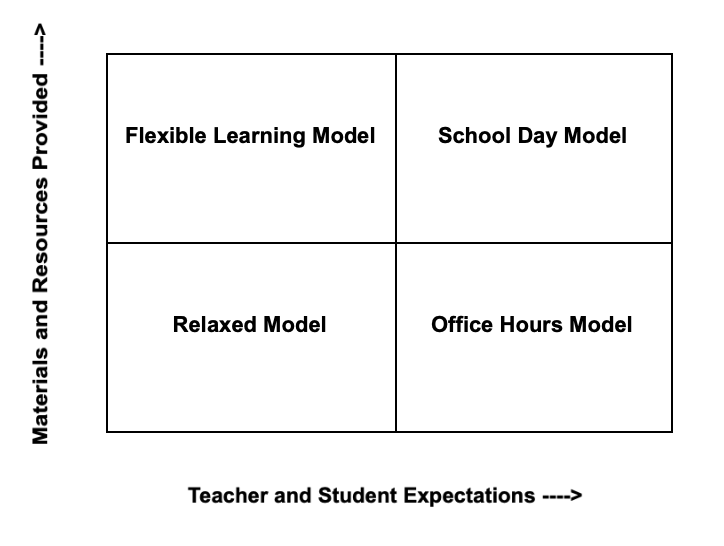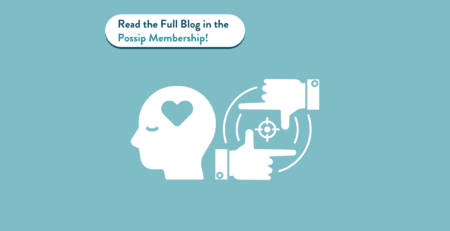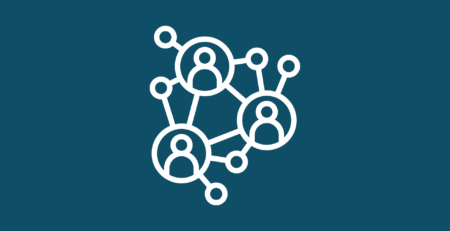Schools all over the country have moved to remote learning. However, the models that schools are utilizing to support learning at home vary greatly. Depending on your community, teacher availability, student needs, and family responsibilities, remote learning can take many different forms. Have you reflected on which one works best for your school?
We’re categorized each remote learning environment into a different model. Each model has a different amount of resources and expectations provided by the school.
The Four Models of Remote Learning:
Flexible Learning Model:
This model is a more passive and flexible model of remote learning. In this environment, there are not strict expectations for teachers and students, but there are materials and resources given to families to do when they can. This is usually an environment where zoom classes aren’t mandatory or are asynchronous (meaning they’re recorded and can be watched whenever). This model puts trust in the families to follow through on using the materials and reaching out for teacher support when needed. There is a lot of flexibility, which comes with additional responsibility and intrinsic motivation to progress academically during this time.
- Reasons you would consider this model: You have a strong parent community who is able to follow their own unique schedule and ways of getting academic work completed.
- Pros: Flexibility for families, lots of materials and resources, allows parents to have lots of autonomy
- Cons: Students don’t have much accountability from the school, have to proactively be aware of students needs to reach out to teachers
School Day Model:
Many private schools are using this model during the COVID-19 school closures. It requires all teachers and students to be on zoom from 8am-3pm and replicates a normal school day. There are very rigid schedules, grading policies, and expectations for teachers and students. All zoom classes are usually live and mandatory, with assignments and deadlines for students.
- Reasons you would consider this model: Parents want their students held accountable to the work and are able to provide full-time technology access for their students every day.
- Pros: Student accountability, access to teachers consistently, students will stay on a set schedule
- Cons: Parents may need to help with tech issues frequently, technology availability may not make it possible for all students
Relaxed Model:
This is a very passive model of remote learning. The school is providing limited resources to families and the expectations of school staff and students are low. This model may be a placeholder until the school comes up with a plan. It also might be present in communities that are really focused on meeting basic needs at this time. Parents have more flexibility with learning and may feel less pressure to focus on academics during a time of crisis.
- Reason you would consider this model: Your district is still in planning mode before they roll out a remote learning model or your community is having a difficult time economically and socially during the COVID-19 crisis.
- Pros: Less expectations during a difficult time of crisis, more flexibility for families and school staff
- Cons: Less learning opportunities for students, can lead to feeling isolated from the school community
Office Hours Model:
This model is one where materials and resources are fairly minimal, but teachers are available for support with the provided materials daily. Students and families would proactively need to join the office hours to ask questions about assignments or instructional materials. The office hours are usually the same time every day. This allows families to have some kind of schedule, but also provides some flexibility if the student doesn’t need support on certain assignments.
- Reasons you would consider this model: Your families need some flexibility but still want teacher support and accountability for their child.
- Pros: Flexibility for the community, daily opportunities to meet with teacher, still have accountability measures in place
- Cons: Students need to be proactive with questions, need to have technology
Which model is your school doing?
If you’d like to think through which model would work best for your school, reach out to amanda@possip.com!






